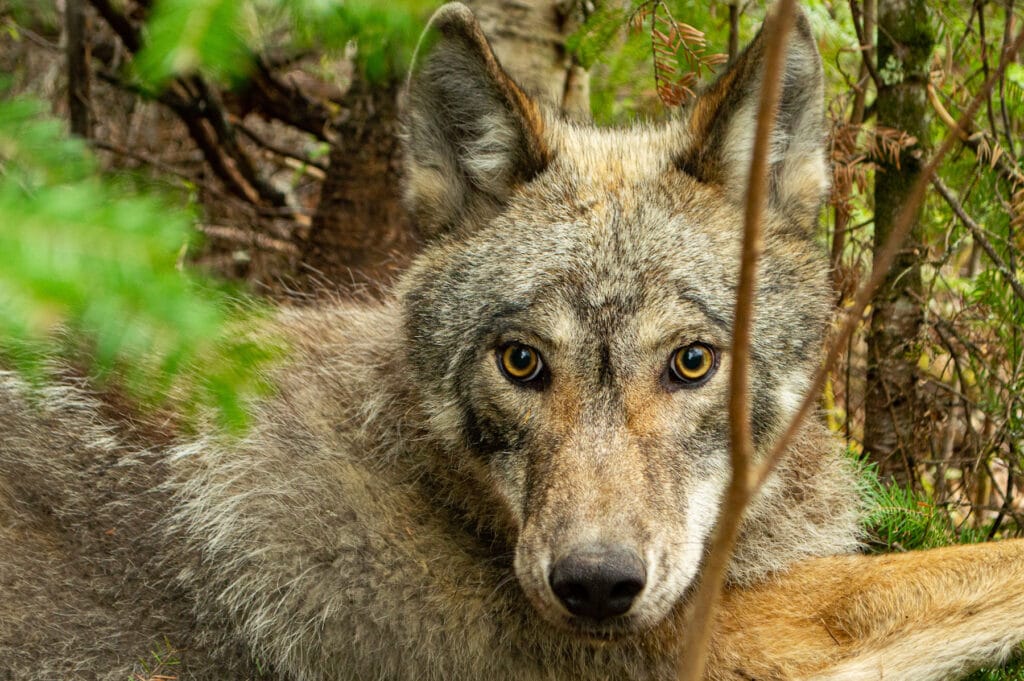A new study from the Voyageurs Wolf Project, a long-term research initiative based at Voyageurs National Park, has revealed the secretive strategies wolves use to catch the park’s abundant beavers. The scientists say it demonstrates that, even though wolves are among the most studied species on Earth, there is still a lot to learn about their lives.
The research contributes to a growing understanding that wolves are not only pursuit hunters, chasing down prey like deer or moose, but also ambush predators, who lay in wait for their prey. It also shows how they have learned to make those ambushes more successful, based on their quarry’s strengths and weaknesses.
The paper published today in the peer-reviewed journal Behavioral Ecology confirms and quantifies what many have long suspected: wolves know to wait downwind so beavers, which have a strong sense of smell, don’t detect them.

Wolves also seem to know that beavers have very poor eyesight, and thus the wolves can wait near their ambush point without worrying about being spotted.
“It is the first systematic analysis of wolf ambushing behavior, and overturns the traditional notion that wolves rely solely on hunting strategies that involve pursuing, testing, and running down prey,” says lead author Thomas Gable, director of the Voyageurs Wolf Project.
Video captured as part of the study show just how important a beaver’s sense of smell is to detect predators, and how little their eyesight factors in. The researchers placed wolf decoys near beaver work areas, and trained motion-activated cameras on them. The beavers were utterly unperturbed by the image of one of their most fearsome foes.
This anecdotal evidence is backed up by a huge amount of hard-earned data. Over five years, the team visited 12,000 sites where GPS collars had indicated a wolf spent significant time. Visiting these sites has been instrumental in the Voyageurs Wolf Project’s studies of the summer behavior of wolves in the boreal ecosystem.
To visit the sites, the researchers often bushwhack through remote untracked wilderness. It may be a buggy day in summer or a frigid day in winter. They conduct careful and systematic investigations of the evidence wolves and beavers leave behind. Then they analyze the data using sophisticated algorithms.
Through this legwork, the researchers found nearly 1,000 sites where wolves had attempted to ambush beavers. About 75 percent of the hunting efforts were apparently unsuccessful, while they seemed to be successful about 20 percent of the time. By visiting ambush sites and documenting the proximity of kill remains, beds where wolves had waited, and nearby habitat features such as dams, lodges, and beaver trails, the scientists got a detailed picture of wolf-beaver dynamics.
Then they cross-referenced the ambush location with wind direction recorded by a weather station in Voyageurs National Park. The findings were pretty conclusive: nine out of 10 hunting sites were downwind of where the wolves planned to surprise a beaver when it ventured on land.

Further analysis showed that wolves were also willing to wait a considerable amount of time to catch a beaver. The GPS data showed the wolves waited about four hours typically, with wait times ranging from less than an hour to 30 hours. On average, they waited less than 10 feet away from the site where they expected a beaver to visit.
The investment of time is not surprising, considering the importance of beavers to wolf diets. The Voyageurs Wolf Project has previously found that, during the ice-free season, beaver makes up nearly half a wolf pack’s food supply.
The researchers analyzed data from GPS collars on 32 wolves as part of the study. Twenty-eight of the wolves hunted beavers while they were being tracked. It’s clearly a widespread feeding method, and the ambush skills were shared among all the animals.
“Gathering data to demonstrate how wind direction influences the ambushing behavior of predators has been difficult for animal ecologists,” said study co-author Joseph Bump. “Scientists have long-thought that ambush predators are able to strategically choose ambush sites in areas where prey are unable to detect them via scent. Until now though, documenting these hunting tactics in exhaustive detail proved extremely challenging.”
Wolves have good reason to improve their beaver-hunting skills. Figuring out that the aquatic rodents can smell well but barely able to see, they have refined their approach to improve success. With wolves and beavers sharing territory across much of their ranges in the United States and Canada, the Voyageurs scientists say their findings should be relevant to the wider predator-prey relationship.

More information:
- Gable et al. 2021. Wolves choose ambushing locations that counter and capitalize on the sensory defenses of their prey. Behavioral Ecology.
- Voyageurs Wolf Project

